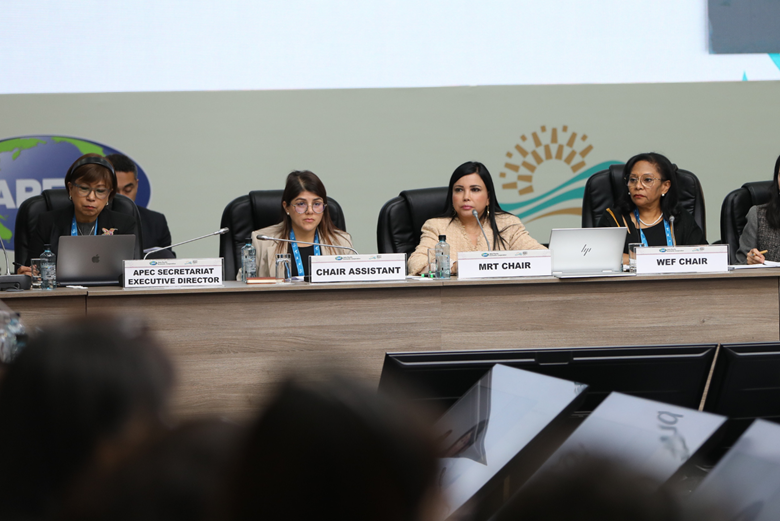
For the first time in APEC's history, ministers responsible for women and ministers responsible for trade from the 21 member economies convened in Arequipa and pledged to strengthen women's economic empowerment in the region through their inclusion in regional and global value chains.
"We recognize that women play a crucial role in driving economic growth and development, yet they continue to face barriers that hinder their full participation in the global economy," said Angela Teresa Hernandez Cajo, Peru's Minister of Women and Vulnerable Populations, in her opening remarks at the joint meeting.
Citing the challenges and gaps identified in the APEC Women and the Economy Dashboard, Minister Hernandez specifically spotlighted the limited access to financing and credit for women, as well as their lower participation in the formal labor market due to lack of flexibility for caregiving.
"It is imperative that we continue to work to reduce these gaps and address these challenges," she added. "We are confident that through concerted efforts and collaborative initiatives, we can eliminate these barriers and unlock the full potential of women as drivers of innovation, entrepreneurship and sustainable development."
Peru's Minister of Foreign Trade and Tourism Elizabeth Galdo stressed that trade can be a powerful tool for economic progress and social advancement. "For trade to truly work for all, it must be underpinned by principles of resiliency, inclusion and sustainability. We cannot afford to leave anyone behind in our pursuit of economic growth."
"Resiliency is essential in navigating the uncertainties and challenges that characterize the global landscape," Minister Galdo said.
"As we confront evolving geopolitical dynamics, technological disruptions and environmental challenges, we must build resilient economies that can withstand shocks and adapt to change," Minister Galdo added. "In doing so, we can create opportunities for women to thrive in a rapidly changing world, enabling them to overcome adversity and seize new possibilities."
Minister Galdo explained that initiatives aimed at inclusive trade can help to break down the barriers that exclude women from fully participating in the economy, whether due to discriminatory practices, lack of access to resources or cultural norms.
"By fostering an environment where diversity is embraced and all voices are heard, we can harness the full potential of our human capital and drive inclusive growth that benefits everyone," she added.
Reflecting on the progress APEC has made since the 1996 leaders' commitment to place emphasis on the full participation of women, Dr Rebecca Sta Maria, the APEC Secretariat's Executive Director, underlined that while APEC has made progress in ensuring women's economic inclusion and participation, the work is far from being done.
"For one, we could do better if we had more robust sex-disaggregated data, which is key to better-informed and well-targeted, tailored policy interventions," Dr Sta Maria added. "Also, there remains stubborn policy and data gaps as well as socio-cultural norms that serve to take us back decades."
Dr Sta Maria highlighted improving access to finance and markets for women, as well as collaborating with other international and multilateral organization to ensure policy coherence, as well as addressing gender biases in trade regulations and promoting women's participation in trade negotiations. She added that trade policies need to consider the specific needs and challenges faced by women.
"Ultimately, all the effort put in will amount to nought if we do not monitor and evaluate the effectiveness of our policies and programs, and adjust strategies accordingly," Dr Sta Maria concluded.






